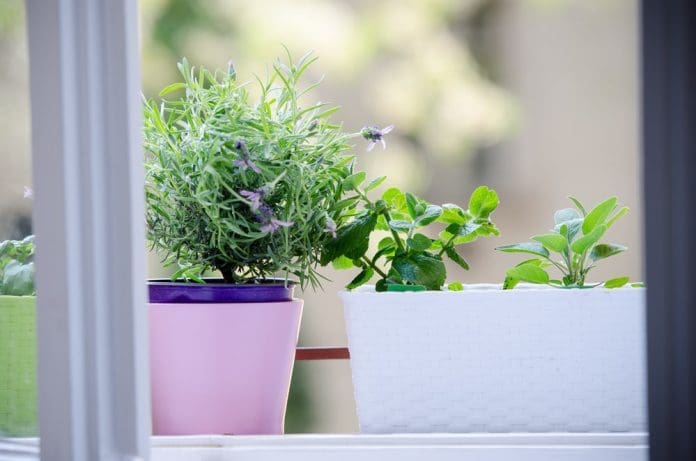Using herbs and spices in cooking opens up a world of culinary possibilities. 300.62 million Americans reportedly use seasonings/spices in their dishes. Of course, most would visit their local grocery store to purchase their preferred herbs and spices. However, did you know that you can easily grow some of your herbs and spices favorites from the comfort of your home? Now you do!
Keep reading as we explore six exceptional herbs and spices you can easily grow in your home garden, windowsill planter, or balcony box. Whether you’re a seasoned green thumb or a curious beginner, these versatile plants will thrive under your care and bring a fresh dimension to your culinary creations.
Are you ready to embark on a flavourful journey of homegrown delights? If so, roll up your sleeves, and grab your gardening tools as we dive into cultivating herbs and spices for the most delightful, fresh, and aromatic dishes you’ll ever create.
Grow Yourself Some Cilantro
Ideal for adding to curries, fajitas, salsa, and stir-fries, cilantro is a bold flavor that helps to complete a dish. Of course, cilantro is a delicious addition to a dish but is also one of the easiest herbs to grow. Find space in your garden where you can plant your cilantro and where it can be left alone to grow. Cilantro thrives in cool weather, and this flavourful herb will rapidly grow and produce a cluster of lacy leaves during spring and fall. The plant produces lanky flower stalk-bearing flower clusters as the temperature heats up. These clusters have white/pinkish blossoms that produce coriander seeds.
Ensure that the area you are planting your cilantro receives full sunlight and is planted in well-drained soil. After planting, keep the soil moist and regularly feed it a water-soluble plant food to help encourage prolific leaf production. You can harvest once the leaves are large enough to eat, but avoid harvesting more than a third of the plant.
Keeping It Fresh With Mint
Another easy-to-grow plant is mint. Whether used to brew a fresh cup of tea or as a sauce for new potatoes, mint is a beloved culinary herb that is great in dishes and easy to grow. If you hope to grow your own herbs and attract wildlife, mint is the perfect choice!
Similar to cilantro, mint grows best in moist but well-drained soil and is planted in full sun to partial shade. Mint should be planted in a pot that is separate from other plants. This is because mint can compete with other plants when planted next to them. However, if you do have a dog, make sure that your planted mint is in a location unreachable by your canine companion. Mint is slightly toxic to dogs, and consuming large quantities can cause them to experience an upset stomach and vomiting.
For The Love Of Garlic
Why not add growing garlic to your collection? Growing garlic at home is a gratifying and straightforward endeavor that rewards you with abundant pungent, flavourful bulbs. With its rich history and culinary versatility, garlic has been a staple in kitchens worldwide for centuries. Select plump and healthy organic garlic bulbs from a trusted source like Basaltic Farms to begin your garlic-growing journey. You can purchase and plant some of their organic garlic bulbs in your garden.
Choose a sunny spot in your garden or use containers with well-draining soil for indoor cultivation. Plant the cloves with the pointed end up, ensuring they are about two inches deep and spaced apart. Garlic appreciates consistent moisture, especially during its early growth stages, but be cautious not to overwater to avoid rotting. With patience and attentive care, the garlic plants will develop sturdy stalks with charming flower heads, which are also edible and can be used in various dishes.

Add Some Bay Leaves into the Mix
Bay leaves can make a great addition to your herb collection. This is because they can be harvested year-round, allowing you to incorporate bay leaves you make in any dish. You can pick the bay leaves to add them to your soups and stews in the wintertime or other slow-cooked dishes in other seasons.
You can grow your bay leaves in a container or free-draining soil. Ensure it is planted in a sheltered, sunny, or partly shaded spot, but keep it protected from strong winds. Additionally, try to avoid growing on damp ground. When winter comes around, move your bay leaves in a container or greenhouse to protect them from frost.
In a pinch? You can also find a great variety with Rivière Oasis cooking spices.
It’s All About the Thyme
Growing thyme at home is a delightful and rewarding experience for any herb enthusiast. Whether you have a sunny windowsill, a balcony planter, or a small garden space, thyme is the perfect herb to add to your homegrown collection.
To cultivate thyme successfully, ensure it receives ample sunlight, well-draining soil, and moderate watering. Its hardy nature makes it resilient to various weather conditions, and once established, thyme will continue to flourish, offering an abundant supply of fresh leaves for your culinary adventures.
Remember The Beloved Rosemary
Another great addition is the beloved rosemary. It is an evergreen herb renowned for its distinctive pine-like fragrance and robust, needle-like leaves and is a favorite among culinary enthusiasts and gardeners. Cultivating rosemary at home is relatively straightforward, requiring a sunny location with well-draining soil to thrive. Whether in a pot on your kitchen windowsill or a sunny spot in your garden, rosemary is a hardy plant that can tolerate various growing conditions.
Regular pruning helps maintain its shape, encourages new growth, and ensures a steady supply of fresh, fragrant leaves for your culinary creations. From flavoring roasted meats and vegetables to infusing oils and vinegar, homegrown rosemary brings a refreshing and savory touch to your dishes, making it an indispensable herb in your kitchen. With its delightful aroma and culinary versatility, cultivating rosemary at home is a true joy that will elevate your cooking to new heights.
The Joy of Growing Your Own Herbs and Spices
Who said growing herbs and spices was difficult? Plenty of options you can grow are ideal for gardening novices and food enthusiasts. You can always buy herbs and spices from the grocery store, but there is something more rewarding about growing herbs and spices in your dishes.
Whether you’re a seasoned gardener or a curious beginner, take that leap and start your herb and spice garden. Your culinary creations will never be the same, and your home will be infused with the enchanting scents of nature’s finest offerings. Happy gardening and bon appétit!



























